
Geoplanidae is a family of flatworms known commonly as land planarians or land flatworms.

Bipalium is a genus of large predatory land planarians. They are often loosely called "hammerhead worms" or "broadhead planarians" because of the distinctive shape of their head region. Land planarians are unique in that they possess a "creeping sole", a highly ciliated region on the ventral epidermis that helps them to creep over the substrate. Several species are considered as invasive to the United States and to Europe. Some studies have begun the investigation of the evolutionary ecology of these invasive planarians.
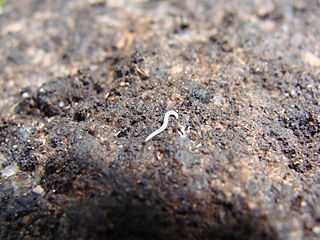
Microplaninae is a subfamily of land planarians.

Geoplaninae is a subfamily of land planarians endemic to the Neotropical region.
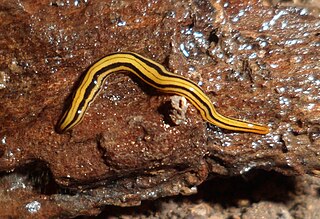
Luteostriata is a genus of land planarians from Brazil characterized by a yellow body with dark longitudinal stripes.

The reproductive system of planarians is broadly similar among different families, although the associated structures can vary in complexity.
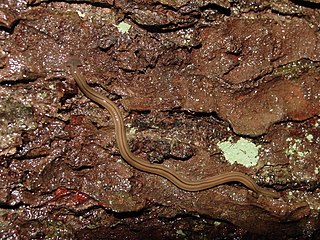
Bipaliinae is a subfamily of land planarians found mainly in Madagascar, the Indian subcontinent and Southeast Asia, although some species have been introduced worldwide.
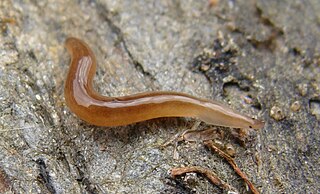
Rhynchodeminae is a subfamily of land planarians with a worldwide distribution.

Rhynchodemini is a tribe of land planarians in the subfamily Rhynchodeminae.

Caenoplanini is a tribe of land planarians in the subfamily Rhynchodeminae mostly found throughout the Australasian and Oceanian realms.
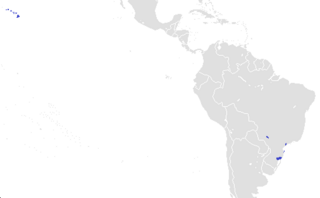
Endeavouria is a monotypic genus of land planarians from the Pacific region. It contains a single species, Endeavouria septemlineata.
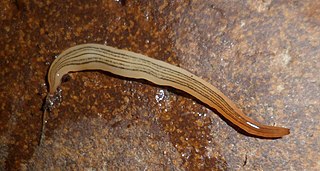
Luteostriata ceciliae is a species of Brazilian land planarian in the subfamily Geoplaninae.
Timyma is a genus of land planarians. One species was found in Chile, but its anatomic features indicate that it is probably introduced to South America, being native from somewhere in the Pacific.
Pimea is a genus of land planarians that currently contains a single species, Pimea monticola, from the central highlands of New Caledonia.
Reomkago is a genus of land planarians from Australia.

Dolichoplana is a genus of land planarians in the tribe Rhynchodemini.
Cotyloplana is a genus of land planarians in the tribe Rhynchodemini.
Novibipalium is a genus of land planarians of the subfamily Bipaliinae.
Beauchampius is a genus of land planarians in the tribe Pelmatoplaninini.
Pelmatoplana is a genus of land planarians in the tribe Pelmatoplanini.










